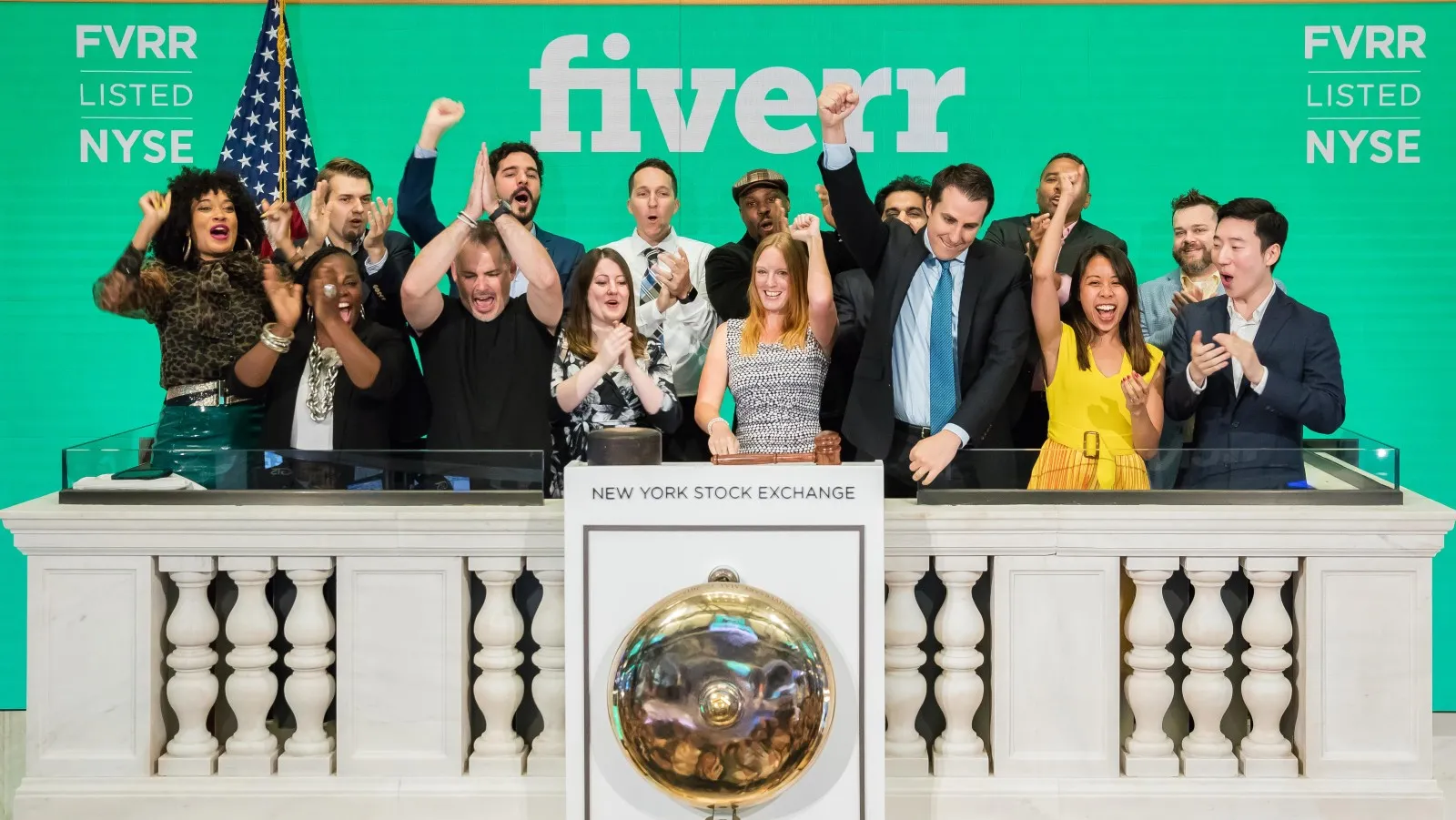When it comes to the gig economy, Fiverr stands out as a popular platform connecting freelancers and clients. You might be wondering, “When did Fiverr go public?” In this post, we’ll explore not just the timeline of Fiverr’s IPO, but also what the company is all about and why it has made such a significant impact in the digital marketplace.
Overview of Fiverr

Fiverr, founded in 2010 by Micha Kaufman and Shai Wininger, is an online marketplace that allows freelancers to offer services to customers worldwide. The site’s name is derived from the original price for many of the tasks offered, which started at just $5. This pricing model has evolved, with sellers providing a range of services at various price points, but the core idea remains: connecting buyers and sellers of freelance services.
Here’s what makes Fiverr unique:
- Wide Range of Services: Fiverr is not restricted to a single industry. You can find everything from graphic design, writing, and translation, to digital marketing, programming, and video editing.
- User-Friendly Interface: The platform is designed for ease of use. Clients can quickly search for services, view freelancer portfolios, and read reviews before making a decision.
- Global Reach: With freelancers from all over the world, Fiverr provides clients with a variety of choices in terms of skills, backgrounds, and pricing.
- Flexible Transactions: The site supports various payment options, allowing both freelancers and clients to transact with ease.
Fiverr operates on a freemium model, meaning while the basic services can be accessed for free, premium features and services often come at a cost. This accessible approach has contributed significantly to its popularity, making it a valuable resource for both budding freelancers and established businesses alike.
In recent years, Fiverr has grown exponentially, and its success culminated in its decision to go public. But when exactly did this happen? Stick around as we delve deeper into that momentous occasion!
Also Read This: Understanding Pending Clearance on Fiverr
Timeline Leading Up to the IPO

The journey of Fiverr towards going public is quite fascinating and filled with key milestones that highlight its growth and evolution. Let's dive into some of the significant moments leading up to its IPO.
- 2010: Fiverr was founded by Micha Kaufman and Shai Wininger, launching a platform aimed at connecting freelancers with clients seeking various services.
- 2015: With a steady growth trajectory, Fiverr introduced various features, enhancing user experience and increasing engagement on the platform.
- 2018: Fiverr raised $110 million in a Series E funding round, which valued the company at approximately $1 billion, positioning it as a unicorn startup.
- 2019: The company further expanded its service offerings and began exploring its options for going public, with significant discussions around an Initial Public Offering (IPO).
- 2020: The COVID-19 pandemic changed the landscape for freelancers and remote work, leading to a surge in demand for Fiverr's services. The company began to realize the potential timing for an IPO was perfect.
- 2021 (Q1): After filing its S-1 registration statement with the SEC, Fiverr officially announced its intention to go public, stoking excitement in the market.
These events paved the way for Fiverr to make a splash in the public market, showcasing its resilience and adaptability in a rapidly changing environment. The stage was set for an exciting reveal.
Also Read This: Setting Your Charges as a Freelancer
Details of the IPO

Fiverr's IPO took place on June 15, 2021, and it was quite the event, capturing the attention of investors and the public alike. Here’s a closer look at what transpired during this significant day:
| Detail | Description |
|---|---|
| IPO Date | June 15, 2021 |
| Ticker Symbol | FVRR |
| Initial Price Range | $21 to $24 per share |
| Final Pricing | $21 per share |
| Proceeds | Approximately $110 million raised |
| Market Impact | Fiverr's shares opened at about $27.54 on their first day, reflecting strong investor enthusiasm. |
The IPO was not just a financial move; it symbolized Fiverr's robust position in the market, giving it greater resources to continue expanding and innovating. As investors embraced its vision, Fiverr solidified its role as a leader in the freelancing platform sector. The excitement around the offering was palpable, confirming the growing importance of gig economy platforms in today’s digital landscape.
Also Read This: How to Get a Lot of Traffic on Your Fiverr
Market Reception and Performance Post-IPO

After Fiverr launched its IPO on June 17, 2020, the market reception was quite intriguing. Initially, the stock opened at $21 per share, but it was clear that investors were keen on the platform. Soon after its debut, the share price skyrocketed, closing at about $39.90 on its first day of trading. This jump can be attributed to a growing interest in digital freelancing platforms, especially amid the pandemic, when many businesses were increasingly seeking flexible, remote solutions.
To give you a clearer picture, here’s a brief look at Fiverr's stock performance in the months following its IPO:
| Date | Stock Price | Market Trend |
|---|---|---|
| June 17, 2020 | $39.90 | Initial surge |
| September 2020 | $60.00 | Continued growth |
| December 2020 | $94.00 | Record high |
| March 2021 | $77.00 | Market adjustments |
Fiverr's performance reflected positive investor sentiment about the gig economy, as well as how essential freelance services became for many businesses during uncertain times. However, as we moved into 2021 and beyond, the stock experienced fluctuations that mirrored the overall volatility of tech stocks. This oscillation indicates that while going public brought attention to Fiverr, it also introduced the stock to the unpredictability of the market.
Also Read This: Why Do People Work on Fiverr?
Impact of Going Public on Fiverr's Business Model
Going public has had a substantial impact on Fiverr's business model, creating both opportunities and challenges. Before the IPO, Fiverr operated with the flexibility that often comes with being a private company. Post-IPO, they found themselves under the scrutiny of public shareholders and analysts, which requires a more structured approach to growth and transparency.
One of the key shifts has been:
- Increased Focus on Profitability: Previously, Fiverr prioritized growth over profit. However, public companies are often driven by the need to show profitability and sustainable growth, pushing Fiverr to improve its financial metrics.
- Enhanced Marketing Efforts: With new capital from the IPO, Fiverr invested in more aggressive marketing strategies. They expanded their brand presence to attract both freelancers and businesses, thereby broadening their market base.
- Improved Technology and Platform Features: Access to public funds allowed Fiverr to enhance its technological backbone, introducing more features that improve user experience for both buyers and sellers.
In essence, going public has mandated Fiverr to not only scale its operations but also foster a deeper commitment to customer satisfaction and financial health. This evolution is crucial for maintaining investor confidence and sustaining growth amid an ever-changing freelance landscape.
Also Read This: How to Get Your Refund from Fiverr
Future Prospects for Fiverr
Fiverr has revolutionized the gig economy since its inception, and as it moves further into the public space, the future looks promising. With technology continuously advancing and more businesses embracing remote work, platforms like Fiverr are becoming increasingly vital. Here are some key factors that could determine Fiverr's future:
- Market Expansion: Fiverr is likely to enhance its offerings by expanding into new markets. The globalization of businesses means that service providers from different countries can connect with clients worldwide, thereby increasing the platform’s reach.
- Diverse Service Offerings: Fiverr has the potential to diversify its services further, potentially adding sectors such as virtual reality, augmented reality, or even AI-related services. By staying ahead of the curve, Fiverr can capture as many niches as possible.
- Enhancing User Experience: As competition heats up, Fiverr will need to focus on providing an even better user experience. Improved user interface design and more robust customer support can help retain users and attract new ones.
- B2B Services: The platform already serves many businesses, but there's still room for growth in the B2B sector. Offering dedicated services tailored for larger corporations can open up new revenue streams.
- Technological Innovations: Integrating advanced technologies like artificial intelligence to match freelancers and clients could streamline processes, making it faster and easier for both parties to find what they need.
All in all, the combination of increasing demand for freelance services and Fiverr’s potential adaptability positions it favorably for a thriving future in the evolving digital landscape.
Conclusion
To wrap things up, Fiverr's journey from a simple startup to a publicly traded company has been nothing short of inspiring. With its initial public offering (IPO) in June 2020, Fiverr not only changed the way freelancers and clients connect but also established itself as a leader in the gig economy. As we look ahead, it’s clear that Fiverr has an exciting road mapped out.
As we’ve discussed, factors like global market expansion, diversification of service offerings, and technological advancements will play pivotal roles in shaping Fiverr's future. The flourishing gig economy suggests that demand for freelance services will only grow, making it a potentially lucrative space for Fiverr and its users.
So, whether you are a freelancer looking to showcase your skills or a business aiming for innovative solutions, Fiverr is likely to remain an invaluable resource in the years to come. The platform's adaptability and commitment to improving user experience underscore its potential to thrive.
In conclusion, for anyone keeping an eye on the gig economy or looking to engage with freelance services, Fiverr’s IPO is just the beginning of a journey that promises to be full of growth, innovation, and opportunity.



